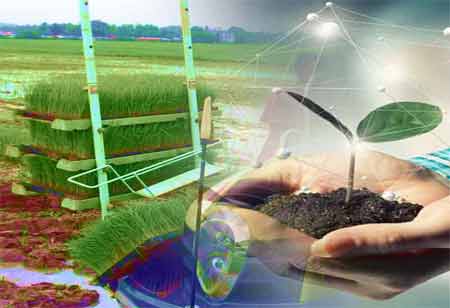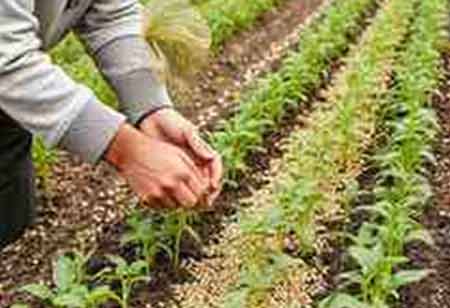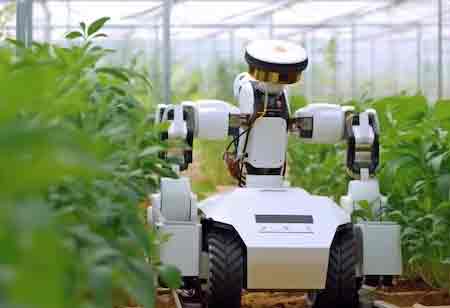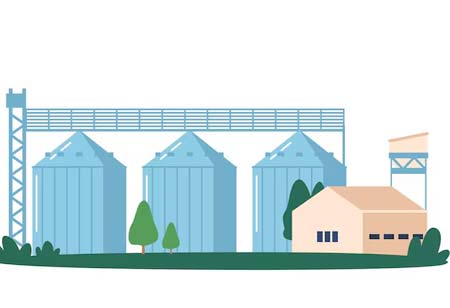Thank you for Subscribing to Agri Business Review Weekly Brief
Biostimulants: Unlocking Plant Potential through Diverse Mechanisms and Sustainable Solutions
Biostimulants, both naturally derived and synthetic, have emerged as valuable tools in modern agriculture, demonstrating their capacity to augment plant growth, bolster stress resilience, and enhance overall crop performance.

By
Agri Business Review | Thursday, February 29, 2024
Stay ahead of the industry with exclusive feature stories on the top companies, expert insights and the latest news delivered straight to your inbox. Subscribe today.
Biostimulants derived from microbial organisms, natural extracts, seaweed, and plant compounds enhance plant growth, stress resilience, and crop performance in agriculture, with advancements focusing on precision-targeted biostimulants.
FREMONT, CA: Biostimulants, both naturally derived and synthetic, have emerged as valuable tools in modern agriculture, demonstrating their capacity to augment plant growth, bolster stress resilience, and enhance overall crop performance. In contrast to conventional fertilisers, which directly supply nutrients, biostimulants operate through intricate pathways, influencing diverse physiological and metabolic processes. A comprehensive understanding of the scientific mechanisms underpinning these effects is imperative for optimising their application and advancing the development of targeted biostimulant solutions.
Biostimulants originate from diverse sources, encompassing microbial organisms such as bacteria, fungi, and algae, which contribute valuable metabolites, enzymes, and signalling molecules. Natural extracts derived from humic substances, seaweed, and plant-based compounds provide a spectrum of bioactive molecules. Furthermore, synthetic compounds can mimic or augment the effects of natural biostimulants. This multifaceted array of sources underscores biostimulant formulations' broad and versatile nature, drawing upon both natural and synthetic origins to enhance agricultural and horticultural practices.
The intricate nature of biostimulants presents a challenge in ascertaining a singular "mode of action" due to their diverse effects. Nevertheless, extensive research has unveiled several pivotal mechanisms. Firstly, biostimulants can enhance nutrient mobilisation and uptake by chelating mineral nutrients, stimulating root growth, and improving soil structure through substances such as humic acids. Secondly, biostimulants influence plant hormone levels through direct application, endogenous hormone production stimulation, or hormone signalling pathway modulation. Thirdly, these substances play a crucial role in stress mitigation and defense responses, aiding plants in coping with abiotic stresses by enhancing antioxidant activity osmoprotection, and inducing stress signaling pathways. Additionally, biostimulants contribute to microbiome interactions, fostering enhanced nutrient cycling, disease suppression, and the promotion of plant growth-promoting bacteria. Lastly, emerging research suggests that biostimulants may impact plant gene expression through epigenetic modifications, potentially leading to enduring changes in plant responses to environmental cues.
Latest Developments and Future Directions
The biostimulants sector is undergoing dynamic advancements, characterised by continuous research endeavours concentrating on several key aspects. These include the meticulous unravelling of distinct mechanisms of action associated with various biostimulant types, the formulation of precision-targeted biostimulants tailored to specific crops and stress conditions, a profound comprehension of the intricate interplay among biostimulants, plants, and the soil microbiome, and the development of standardised methodologies for the comprehensive assessment of biostimulant efficacy. This progressive exploration is pivotal in enhancing our understanding of biostimulant applications, fostering innovation, and establishing a foundation for effectively integrating biostimulants into modern agricultural practices.
Biostimulants represent a promising and sustainable strategy for augmenting plant growth, stress tolerance, and agricultural productivity. Despite their varied origins and intricate modes of action, ongoing research is elucidating their potential and facilitating the development of precise and efficient products to support sustainable farming methods.





